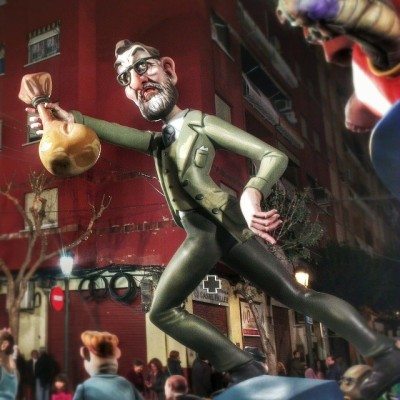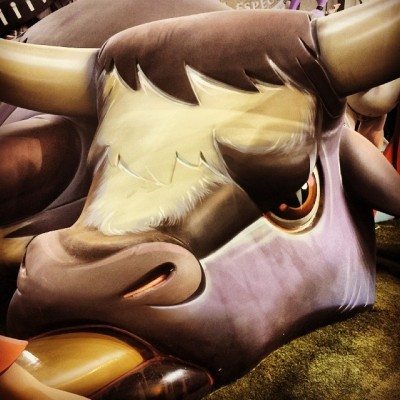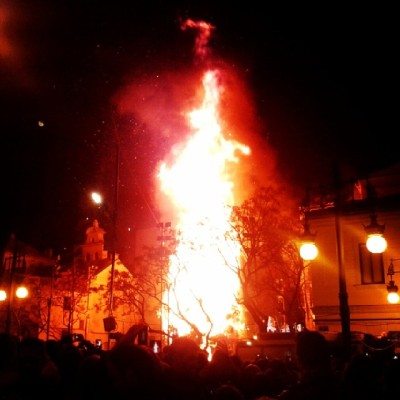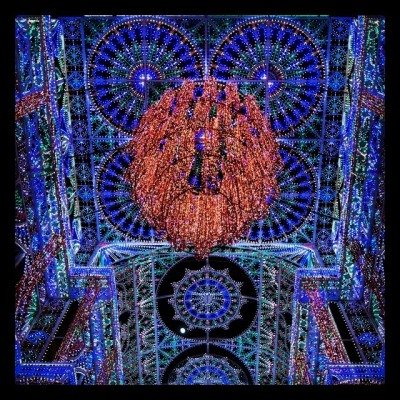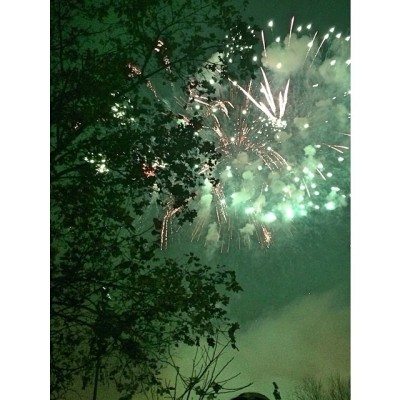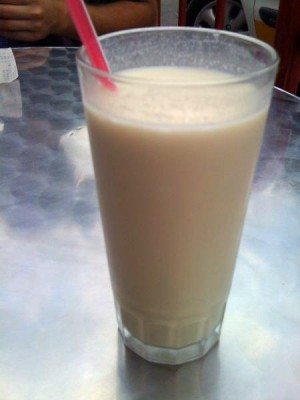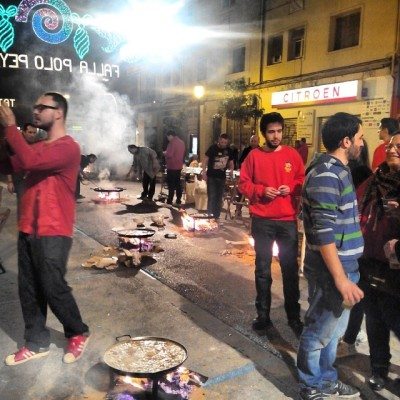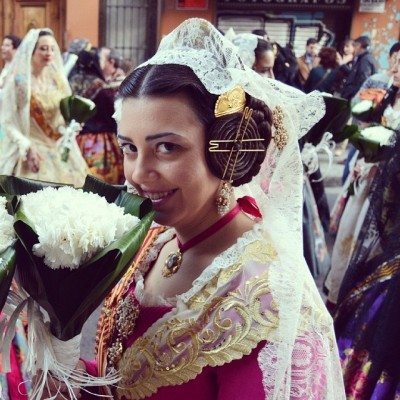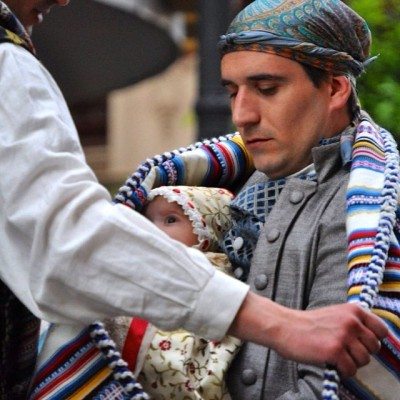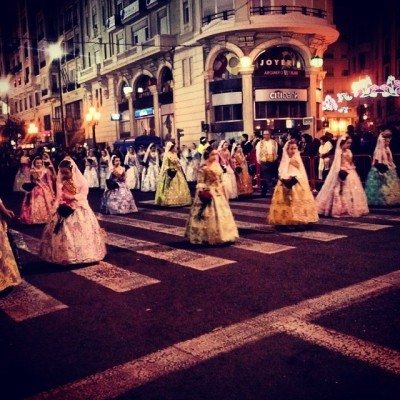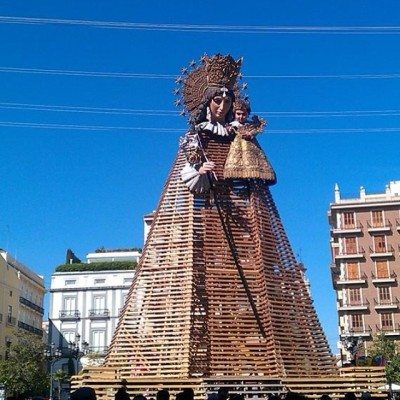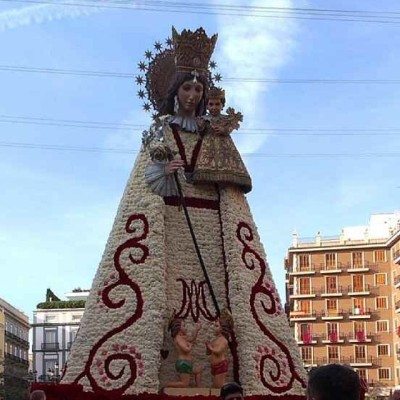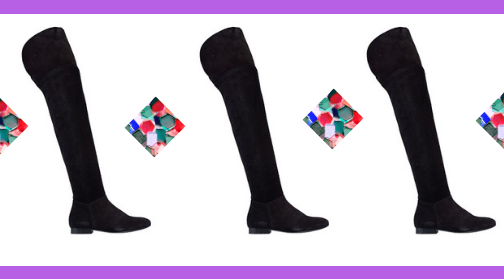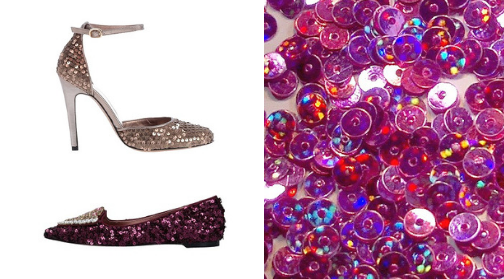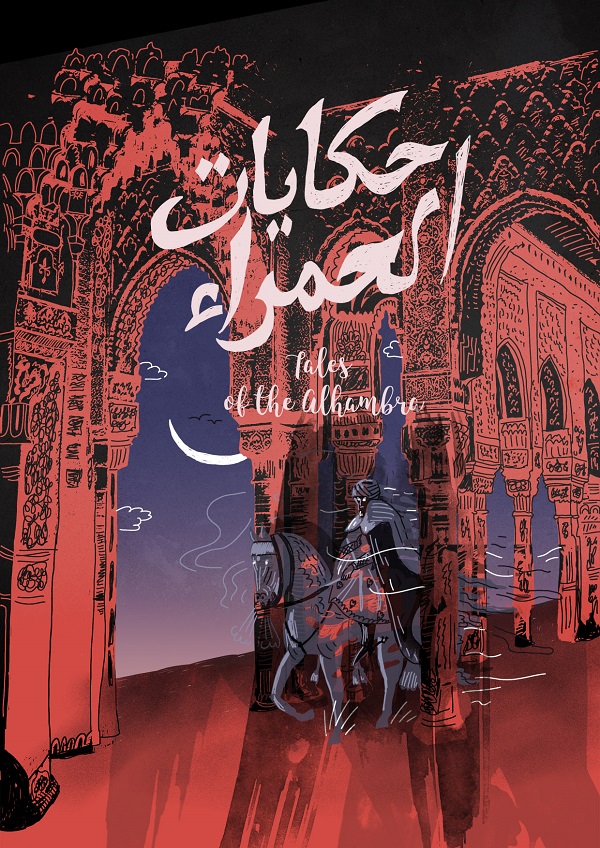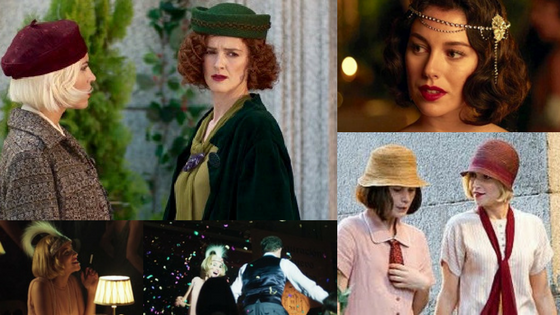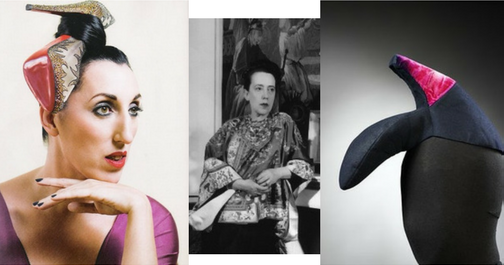Valencia, the capital of the Valencian Community on the east coast of Spain, and Spain’s third largest city, was literally on fire yesterday when Valencianos were busy celebrating the close of the Fallas, a popular festival that takes place every year in March. Fallas is a celebration of spring and the equivalent of a city-wide “Spring Cleaning”. Each neighborhood of the city creates its own “falla” made up of “ninots” – giant cartoon-style dolls made of paper-mâché. The ninots are hilarious, sexy, and often political. Here is a ninot of the current Spanish prime-minister Mariano Rajoy, who had the ungrateful task of negotiating a financial deal to rescue Spanish economy.
Mr. Rajoy portrayed as running off with the country’s money
Photo: @jlvico (Instagram)
Look at this gorgeous ninot with her beautiful stockings. Nice shoes too!
Photo: @clarabelda (Instagram)
And a bull ninot:
Photo: @roberto_ig (Instagram)
These figurines get burned on the last night of the Fallas called “la nit de la cremà” – “the night of burning” in Valencian. Yes, Valencia has its own language, alongside Spanish. It’s a variety of Catalan, the language spoken in neighboring Catalonia.
Burning of a ninot, La Nit de Cremà 2014
Photo: @juanky_86 (Instagram)
Basically, during Fallas the whole city becomes one giant amusement park. The people go all out with light installations and fireworks. Fireworks and firecrackers go off continuously. Imagine the racket!
Photo: @nothemingwaysspain, @itskayjb (Instagram).
Excellent Valencian “fast” food and drink is sold everywhere by street vendors and from make-shift paella making stations. Valencians have this amazing drink called horchata. It’s made from the tigernut plant and it looks milky. It’s super refreshing, especially in the heat of Valencian summer. The taste is unforgettable.
Photo: @alexandra_radu16 (Instagram)
The most solemn and beautiful event of the Fallas is the Ofrenda de Flores: the Offering of Flowers. Scores of people dressed in gorgeous traditional Valencian dress (falleras and falleros) march through the central streets carrying flowers for the mantle of the city’s patroness: Our Lady of the Forsaken.
Falleras and Falleros 2014.
Photos: @thaiseta954, @aniita61, @fotofabra, @amparorodrigo (Instagram)
The statue of the virgin, which is said to have been built by angels in the 15th century, resides in the basilica dedicated to her at the Plaza de la Virgen (the Virgin’s Square). The Virgin of the Forsaken is a special protectress of people with mental health issues and others on whom the society too often turns its back.
During Fallas a giant replica of the statue is erected in the square, with wooden slats in a form of a mantle, which then gets filled with the flowers brought by the people.
This is Our Lady of the Forsaken before and after the Ofrenda de Flores 2014.
Photos: @pau_liski (Instagram)
What a way to welcome spring! I have not even got around to clearing all the snow and ice outside, let alone done any spring cleaning. I’m also now very hungry for paella (the best paella is from Valencia), thirsty for horchata, and plain envious of the great fun everyone is clearly having over there.
To find out more about the city of Valencia, go to this excellent blog by Zach Frohlich, an American expat living in Valencia: Not Hemingway’s Spain. It’s a great resource on Valencia and other major cities in Spain.
